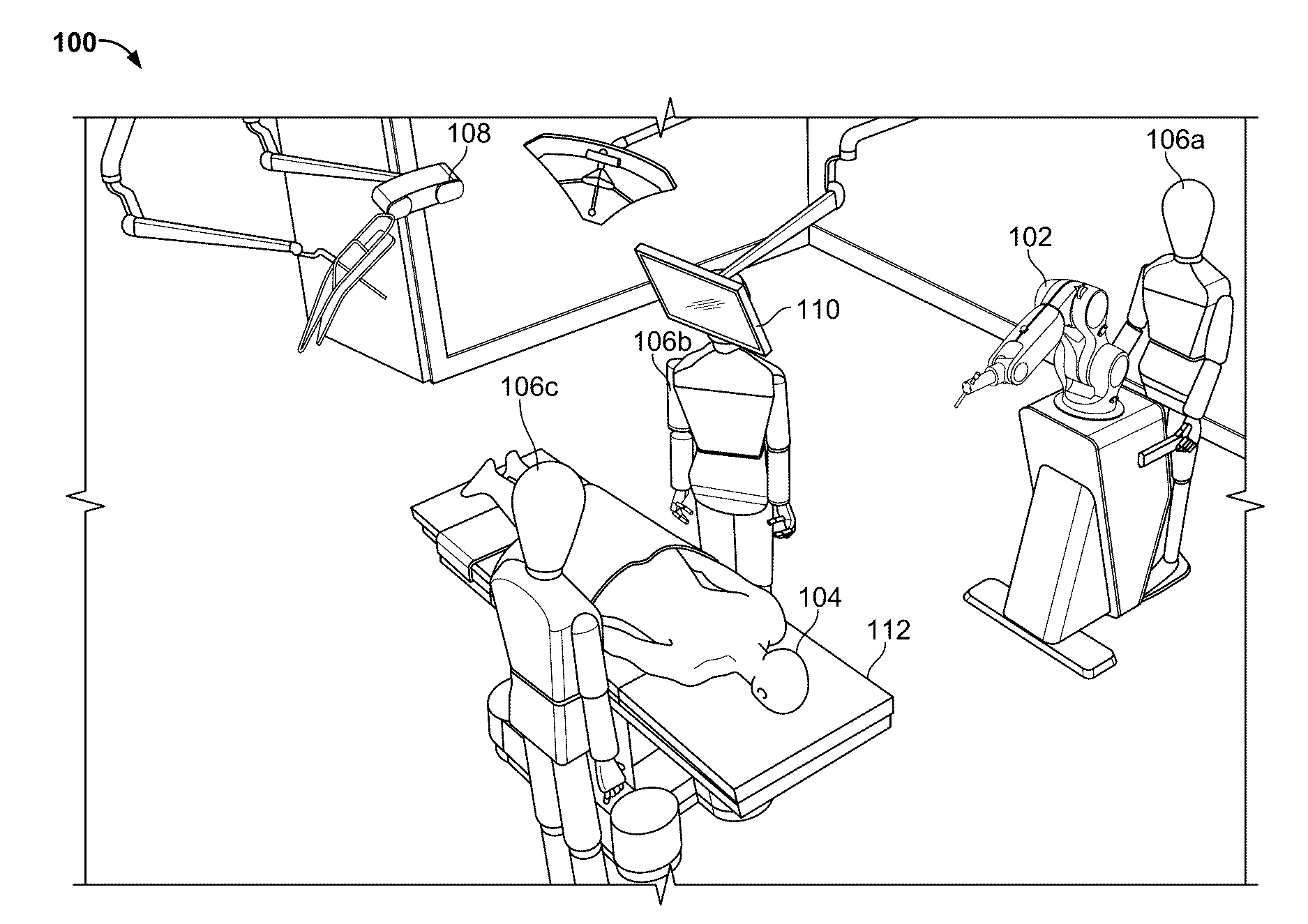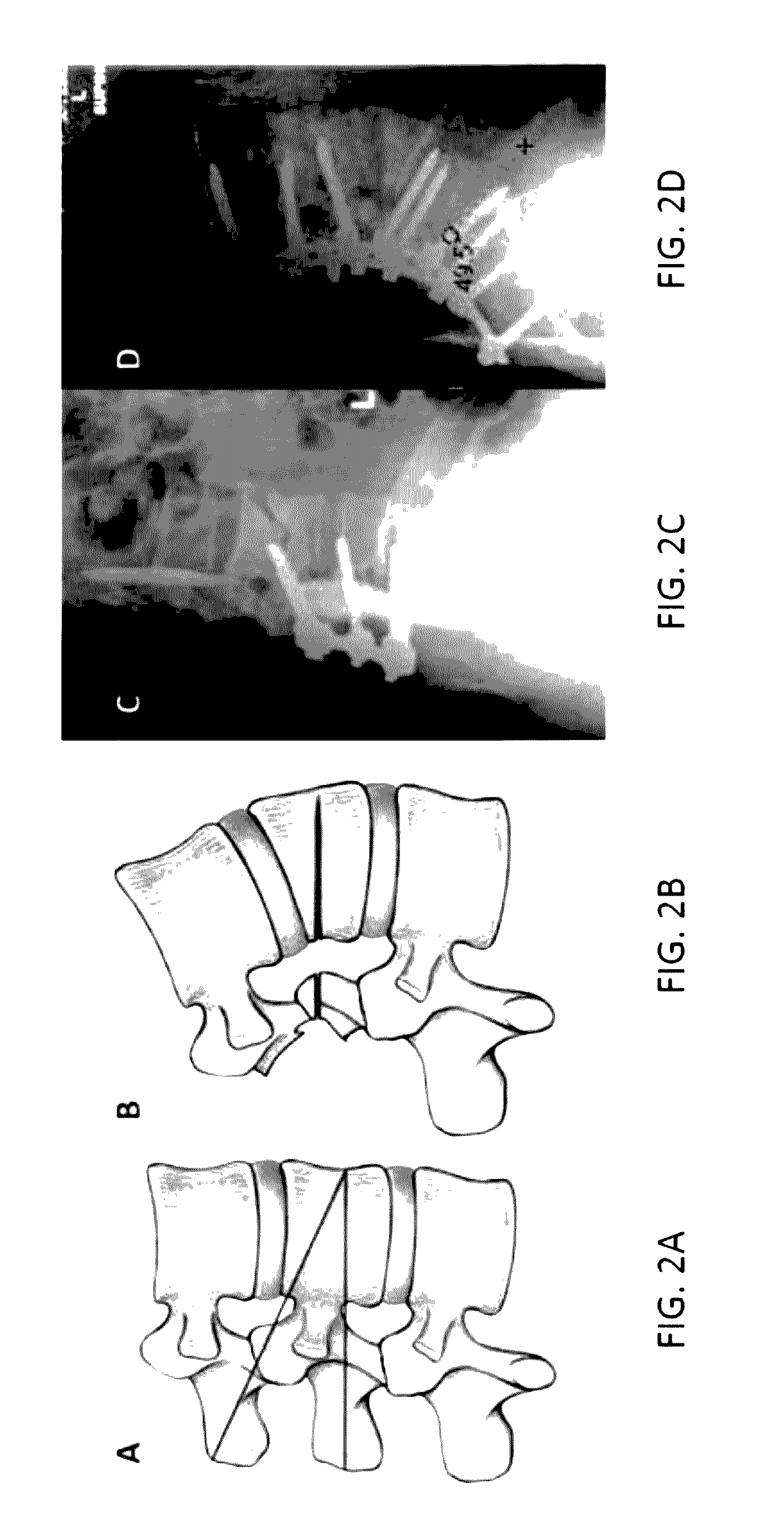Robotic surgical systems and methods
a robotic surgical and robotic technology, applied in the field of robotic surgical systems and methods, can solve the problems of limited acceptance of robotic systems by surgeons and hospitals, high cost of owning and maintaining current systems, and extensive preoperative surgical planning, so as to prevent damage to the nervous system
- Summary
- Abstract
- Description
- Claims
- Application Information
AI Technical Summary
Benefits of technology
Problems solved by technology
Method used
Image
Examples
Embodiment Construction
[0092]FIG. 1 illustrates an example robotic surgical system in an operating room 100. In some implementations, one or more surgeons, surgical assistants, surgical technologists and / or other technicians (e.g., 106a-c) perform an operation on a patient 104 using a robotic-assisted surgical system. In the operating room 100 the surgeon may be guided by the robotic system to accurately execute an operation. This may be achieved by robotic guidance of the surgical tools, including ensuring the proper trajectory of the tool (e.g., drill or screw). In some implementations, the surgeon defines the trajectory intra-operatively with little or no pre-operative planning. The system allows a surgeon to physically manipulate the tool holder to safely achieve proper alignment of the tool for performing crucial steps of the surgical procedure. Operation of the robot arm by the surgeon (or other operator) in force control mode permits movement of the tool in a measured, even manner that disregards a...
PUM
 Login to View More
Login to View More Abstract
Description
Claims
Application Information
 Login to View More
Login to View More - R&D
- Intellectual Property
- Life Sciences
- Materials
- Tech Scout
- Unparalleled Data Quality
- Higher Quality Content
- 60% Fewer Hallucinations
Browse by: Latest US Patents, China's latest patents, Technical Efficacy Thesaurus, Application Domain, Technology Topic, Popular Technical Reports.
© 2025 PatSnap. All rights reserved.Legal|Privacy policy|Modern Slavery Act Transparency Statement|Sitemap|About US| Contact US: help@patsnap.com



